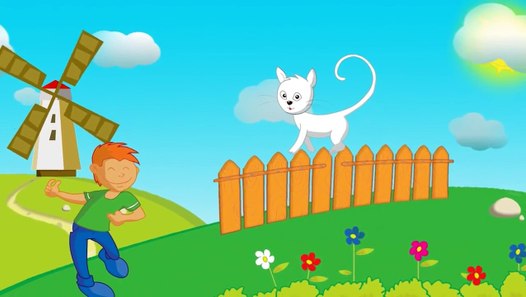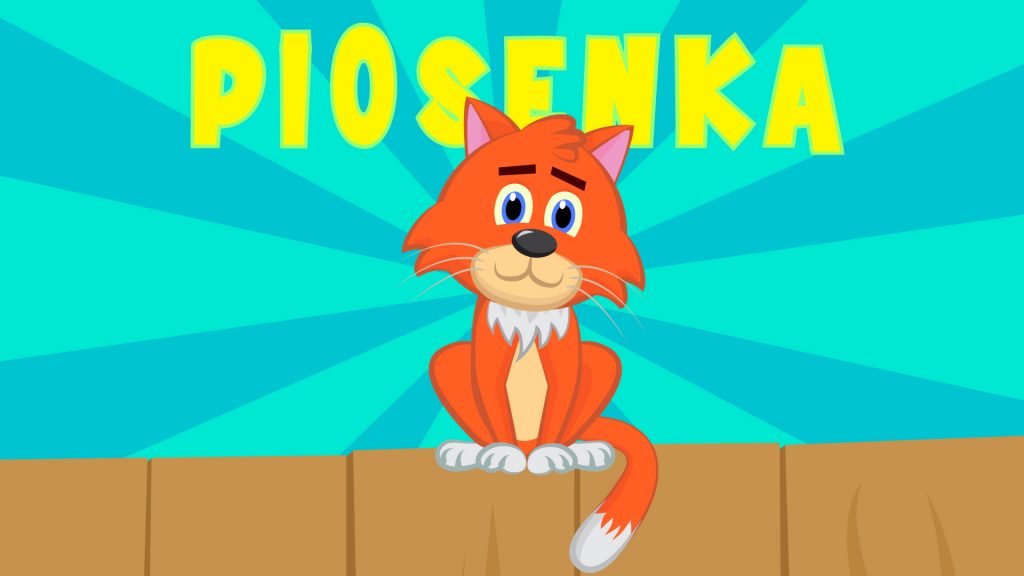Wlazł Kotek Na Płotek is a classic Polish nursery rhyme. It is very popular with young children.
The Polish Original
Let’s start with the original Polish version.
Wlazł kotek na płotek,
I mruga,
Ładna to piosenka,
Nie długa.
Let's break it down line by line. Imagine each line is a piece of a puzzle, forming the complete picture.
Wlazł kotek na płotek translates to "The little cat climbed on the fence." Think of a cartoon cat, with big eyes, carefully stepping onto a wooden fence.
I mruga means "And winks." Visualize the cat, perched on the fence, playfully winking at you. A quick, single wink!
Ładna to piosenka translates to "This is a nice song." Picture musical notes floating around the cat, illustrating the song's pleasant nature.
Nie długa means "Not long." Imagine a short timeline; the song ends quickly.
English Translation
Here's a direct translation for easier understanding.
A little cat climbed on the fence,
And winks,
This is a nice song,
Not long.
The English translation helps to understand the simple narrative. It describes a cat on a fence. The cat is engaging in a playful action. It then calls the song nice and short.
Variations in Other Languages
Let's explore how this rhyme could be translated into other languages. This shows how similar ideas can be expressed differently.
German
While there's no direct German equivalent, we can adapt the idea.
Die kleine Katze klettert auf den Zaun,
Und blinzelt,
Das ist ein schönes Lied,
Nicht lang.
Consider "Die kleine Katze" (the little cat). It's visually equivalent to "little cat" in English. Imagine the German word 'Katze' written on the cat's collar.
"klettert auf den Zaun" (climbs on the fence). See it like a verb. Picture the cat's paws actively climbing.
"blinzelt" (winks). It shows the same visual cue as the Polish original. A slight squint of the eyes.
"schönes Lied" (nice song) and "Nicht lang" (Not long) show the song's characteristics. Imagine notes surrounding the song that are quick.
Spanish
Let's see how we can express the rhyme in Spanish.
El gatito subió a la cerca,
Y guiña,
Es una canción bonita,
No larga.
"El gatito" (the little cat). Picture the word "gatito" written on the cat's forehead.
"subió a la cerca" (climbed on the fence). Imagine an arrow pointing upwards, showing the cat's upward movement.
"guiña" (winks). Same action of the Polish rhyme.
"canción bonita" (nice song) and "No larga" (Not long) are visually linked to musical notes that are quick.
French
Now, let’s adapt it to French.
Le petit chat grimpa sur la clôture,
Et cligne de l'œil,
C'est une jolie chanson,
Pas longue.
"Le petit chat" (the little cat). See "chat" (cat) written on a tiny bell around the cat's neck.
"grimpa sur la clôture" (climbed on the fence). Visualize a small ladder leaning against the fence, helping the cat climb.
"cligne de l'œil" (winks). The wink is universal.
"jolie chanson" (nice song) and "Pas longue" (Not long). Musical notes that are quick.
Why These Translations Work
Each language conveys the same fundamental idea. However, they use different words and phrasing. Think of it like different artists painting the same scene. Each artist uses a different style, but the subject remains the same.
The core elements are consistent: a small cat, the action of climbing, a fence, a wink, and a short, pleasant song. These elements form the basis of the rhyme. They make it universally appealing.
The Power of Simplicity
The rhyme's success comes from its simplicity. The vocabulary is basic. The structure is straightforward. The imagery is clear and relatable. Young children can easily grasp the concept of a cat climbing a fence. They can also relate to the playfulness of a wink.
The rhyme can be a great tool for language learning. It provides a simple context. It provides an easy structure for introducing new vocabulary. Learning the rhyme in multiple languages can be a fun way to explore cultural differences. It can also appreciate the universality of human expression.
Conclusion
Wlazł Kotek Na Płotek is more than just a Polish nursery rhyme. It's a window into language, culture, and the simple joys of childhood. By understanding the rhyme and exploring its potential translations, we gain a deeper appreciation for the beauty and diversity of human communication. Consider it a little linguistic adventure, sparked by a cat, a fence, and a wink.

